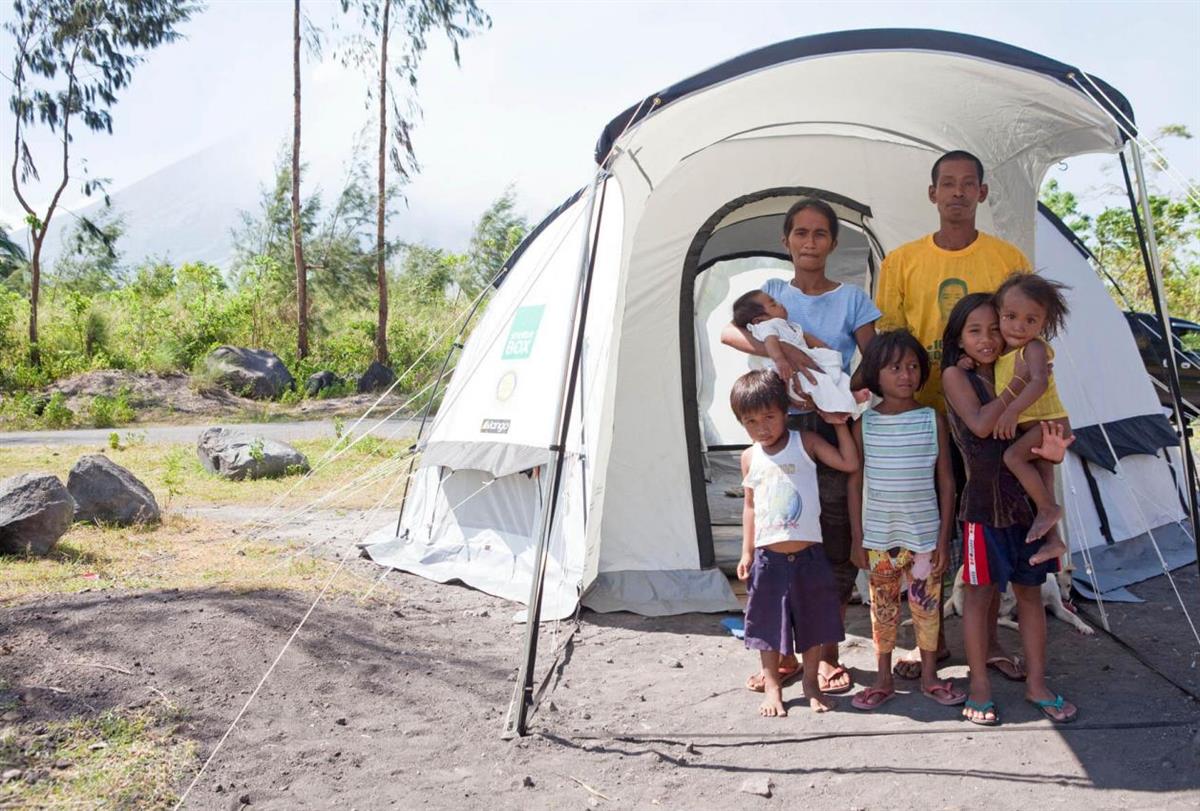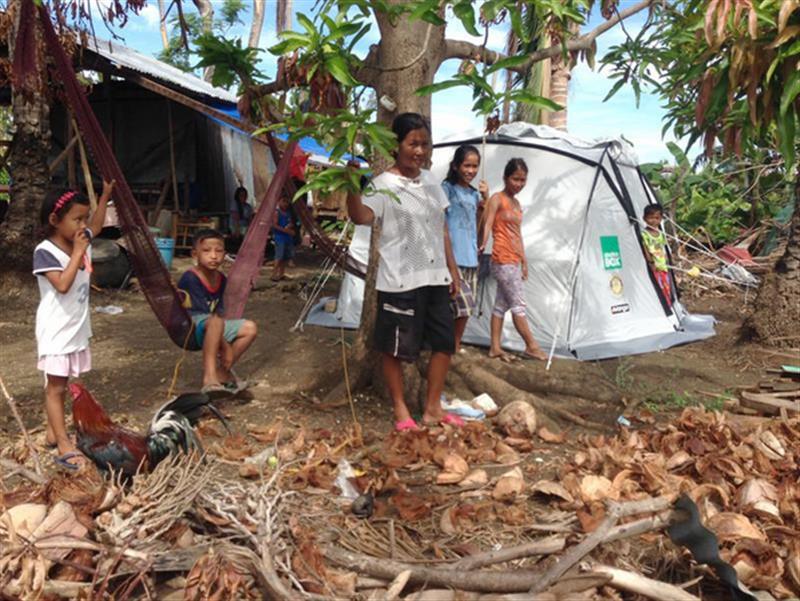 A family stands proudly outside their ShelterBox tent, which they received following typhoon Rammasun, locally known as Butchoy that destroyed more than 100,000 houses and damaged 400,000 others.
A family stands proudly outside their ShelterBox tent, which they received following typhoon Rammasun, locally known as Butchoy that destroyed more than 100,000 houses and damaged 400,000 others.
DISASTERS IN THE PHILIPPINES
The Philippines is hit by a series of deadly natural disasters every year. Find out more about how we’ve responded to disasters through the years.
We have responded to disasters in the Philippines more than any other country.
Since 2004 we have responded 25 times in the country to various devastating disasters such as storms, typhoons, floods, cyclones, and earthquakes.
One of the largest disasters we responded to in the Philippines was Typhoon Haiyan, known locally as Typhoon Yolanda. Haiyan was the most powerful storm in 2013 and one of the most powerful tropical cyclones of all time.

A family who received a ShelterBox tent after Typhoon Haiyan
WHY DO SO MANY DISASTERS HAPPEN IN THE PHILIPPINES?
Warm ocean waters, low-lying coasts, poverty and geography help explain why the Philippines is so prone to natural disasters.
Located just above the equator, the Philippines faces the western Pacific without much else in the way to take the force of storms before they make landfall. Those warm, equatorial waters power about 20 typhoons a year.
In recent decades, a lot of people have flocked to risky, low-lying islands - havens for cheap and crammed housing. The rapidly constructed housing and inadequate evacuation plans mean that the local population is left vulnerable when disaster strikes, with existing shelter unable to withstand the extreme weather conditions.
On top of everything else, the location of the Philippines on the Pacific Ring of Fire means the country is very prone to earthquakes, volcanic eruptions, tropical storms and typhoons.
The country also experiences monsoon rains across the country which can lead to flooding and landslides.
Source: National Geographic
Read more: Shelterbox
PHILIPPINES TIMELINE
We've responded in the Philippines more than any other country we've responded to. Have a look at some key dates dating from 2000 up until today.
2000 - ShelterBox was founded in Helston, Cornwall.
2004 - Typhoon Nanmadol, locally known as Yoyong, hits the Philippines and ShelterBox responds soon after.
2009 - Typhoon Parma, known in the Philippines as Typhoon Pepeng, was the second typhoon to affect the Philippines within the span of a week. We supported nearly 650 families
2011 - We supported families in Luzon following Typhoon Pedring, known locally as Nesat.
2013 - Typhoon Bopha, known in the Philippines as Pablo, devastates the Philippines. We responded in the area of Mindanao, supporting over 1,200 families.
2013 - Typhoon Haiyan, known as Super Typhoon Yolanda in the Philippines, was one of the strongest tropical cyclones ever recorded, wreaking havoc in the country. we responded with supporting nearly 3,500 families.
2014 - Typhoon Rammasun, also known as Typhoon Glenda, was one of the only two Category 5 super typhoons on record in the South China Sea. We supported more than 1,000 families in the area of Legazpi.
2017 - ShelterBox Operations Philippines is established as a non-government organisation.
2018 - Also known as Ompong in the Philippines, Super Typhoon Mangkhut ripped through the Philippines' main island of Luzon. We responded by supporting over 1,000 families in the area.
2019 - Our latest response in the Philippines follows the devastating Tropical Storm Usman that made landfall in the country last December. We've supported over 2,000 families with ShelterKits, mosquito nets, solar lights, water carriers, blankets and storage boxes.
SHELTERBOX OPERATIONS PHILIPPINES
ShelterBox Operations Philippines is a new NGO, locally registered in the Philippines and run by ShelterBox Operations HQ in the UK.
ShelterBox Operations Philippines allows us to locally store aid items in the province of Cebu so that we can respond and distribute fast and efficiently within the country, whenever disaster strikes.
This is a first for ShelterBox – setting up ShelterBox Operations Philippines is an achievement we celebrate and feel proud of.
It’s a great example of our flexible and agile model at work, which enables us to ensure we’re well-placed to reach families as quickly as possible when disaster strikes.
Learn more